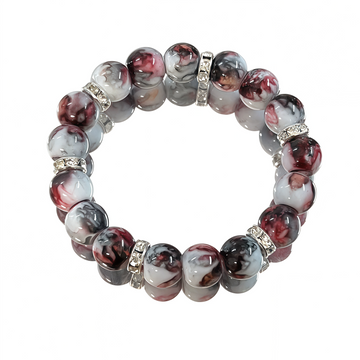Exploring the Relationship Between Origin and Quality in Hetian Jade Bangles
Hetian jade, also known as nephrite jade, has been revered for millennia in Chinese culture for its durability, luster, and symbolic significance. Among its various forms, bangles crafted from this stone are particularly prized. The quality of a Hetian jade bangle is deeply influenced by its geographical origin, as different regions produce stones with distinct mineral compositions, textures, and visual characteristics. Understanding these regional differences allows collectors and enthusiasts to appreciate the nuances that define high-grade specimens.
The Historical Heartland: Xinjiang’s Hetian Region
Xinjiang, particularly the Hetian area, is synonymous with the finest nephrite jade in the world. Stones from this region are celebrated for their exceptional density and oil-like luster, a result of millions of years of geological pressure and mineral interaction. The white jade from Hetian, often called "mutton fat jade" for its creamy translucence, is among the most sought-after varieties. Its texture is remarkably fine, with minimal visible grain, allowing light to penetrate deeply and create a soft, glowing effect.
Green and brown nephrite from Xinjiang also exhibit unique qualities. The green hues range from pale celery to deep emerald, often with subtle veining that adds depth without compromising clarity. Brown varieties, sometimes referred to as "autumn jade," display warm, earthy tones that contrast beautifully with the stone’s natural polish. These stones are typically harder than those from other regions, making them ideal for intricate carvings and durable bangles that withstand daily wear.
Qinghai Province: A Modern Source of Vibrant Varieties
Qinghai, located in northwest China, has emerged as a significant producer of nephrite jade in recent decades. The region’s stones are distinguished by their high water content, which gives them a brighter, more translucent appearance compared to Xinjiang jade. Qinghai white jade tends to have a slightly bluish or grayish tint, with a texture that is fine but less oily than its Xinjiang counterpart. This creates a striking, icy aesthetic that appeals to those who prefer a modern, minimalist look.
Green nephrite from Qinghai is equally notable for its vivid color saturation. The stones often feature intense, almost neon greens that stand out against their translucent background. While some purists argue that Qinghai jade lacks the historical prestige of Xinjiang varieties, its consistent quality and accessibility have made it a popular choice for contemporary jewelry designs. The region’s jade is also more abundant, allowing for larger bangle sizes without sacrificing structural integrity.
Russian Nephrite: A Cross-Border Contender
Russia’s Lake Baikal region is another key source of nephrite jade, producing stones that share similarities with both Xinjiang and Qinghai varieties. Russian jade is typically darker and more opaque than Chinese specimens, with a texture that ranges from medium to coarse grain. Despite this, it is highly valued for its deep, forest-green hues, which are often more uniform than those found in Qinghai stones. The opacity of Russian jade gives it a robust, stone-like appearance that pairs well with bold, geometric designs.
One advantage of Russian nephrite is its resistance to cracking during carving, making it a favorite among artisans who specialize in detailed motifs. While it may lack the translucency of Xinjiang jade, its durability and rich color make it a practical choice for bangles intended for frequent use. Additionally, Russian jade’s relative novelty in the global market has sparked interest among collectors seeking alternatives to traditional Chinese sources.
Environmental Factors Shaping Jade Characteristics
Beyond geographical location, the specific environmental conditions of each region play a crucial role in determining jade quality. For instance, Xinjiang’s arid climate and high-pressure tectonic activity contribute to the dense, compact structure of its jade. In contrast, Qinghai’s colder temperatures and glacial deposits result in stones with higher water content and greater translucency. Russian jade, formed in volcanic rock near Lake Baikal, absorbs trace minerals that deepen its green tones and enhance its hardness.
The age of the jade deposits also matters. Older formations, such as those in Xinjiang, have undergone more extensive metamorphosis, leading to finer textures and richer colors. Younger deposits, like some found in Qinghai, may exhibit more variability in quality but offer unique aesthetic traits that appeal to niche markets. Understanding these geological processes helps explain why two stones from different regions can look and feel vastly different, even if they belong to the same mineral family.
The origin of a Hetian jade bangle is far more than a label—it is a window into the stone’s history, composition, and potential for beauty. By recognizing the distinct qualities tied to Xinjiang, Qinghai, and Russian sources, buyers can make informed choices that align with their aesthetic preferences and cultural values. Whether drawn to the timeless elegance of Xinjiang white jade, the vibrant clarity of Qinghai greens, or the rugged charm of Russian nephrite, each region offers a unique expression of this ancient gemstone’s allure.







